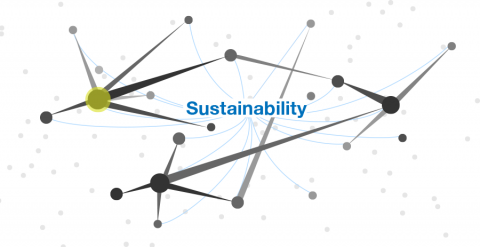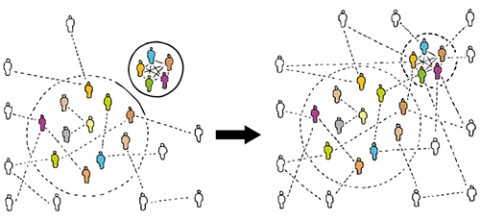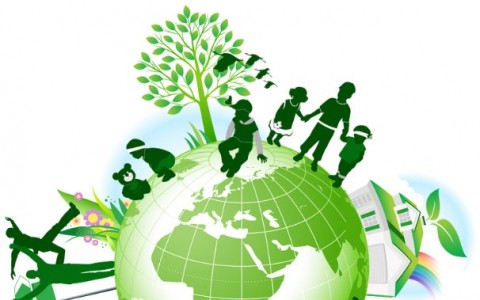Networks and the New Science of Sustainability
November 3, 2015 Leave a comment“The goal is not so much to see that which no one has seen, but to see that which everyone else sees in a totally different way.”
– Arthur Schopenhauer
I just finished reading The New Science of Sustainability:Building a Foundation for Great Change, which added depth and nuance to my understanding of the importance of thinking and working in networked ways to create social change. Lead author Sally J. Goerner isScience Advisor to the Capital Institute and lectures worldwide on how the science of “energy networks” can provide measures and an overall narrative for supporting social, economic, and ecological sustainability.
The authors spend a portion of their book talking about the evolution of life on the planet which has led to ever more complex organisms (including human beings and societies). The overall trajectory of this evolution, from their perspective, has been grounded in a dynamic of “energy pressing to flow.” That is, as energy builds to a certain point in a living system and is concentrated in existing structures, the system is poised with the option of continuing business as usual towards collapse (essentially becoming top heavy) or “bubbling up” new forms and flows for that energy to follow, which leads to greater resilience and diversity.
Another way of putting this is that it is ultimately through ever more intricate webs of connection and exchange that living systems survive and thrive. These webs are fed by the continuous flow of resources and information, the maintenance of diversity and having a variety of different sized structures (small, medium and large). Losing too much diversity or too many pathways robs a living system of its integrity and ability to evolve.
“Long term prosperity is primarily a function of healthy human webs.”
When we are thinking about human societies as living systems, we are looking at “ecosystems” held together by flows of information through communication and education. Robust and distributed flows of information are critical for the creativity, resilience and development of human communities. As Goerner and her colleagues write, human systems “are the most intelligent when they are integrative, inclusive and egalitarian.”
“The stories we tell ourselves about how the world works form our greatest survival tool.”
All of this puts networks and network building in a new light. Networks have always been key to supporting life and liveliness – life is after all a network. And a constant threat to aliveness is rigidity, hoarding and exclusion. Economically we are seeing plenty of evidence of this globally, pushing us towards what Jane Jacobs once called socio-economic “necrosis.” With hyper-concentration of resources among certain privileged actors, patterns of exclusion and growing inequality (all addding up to “oligarchy“), we see the entire system put at risk. The antidote is robust, diversified local networks that are connected to other such networks, which are collectively able to move resources of many kinds fluidly from and to all parts of the social body.
“We are actually waiting for civilization to both learn and reorganize itself with more intricacy, more collaborative coherence, and greater social intelligence.”
Networks are not simply a strategy, a tactic, a means to an end. They are an invitation to understand and act in the world that aligns better with life, a more expansive definition of health and human identity, and an important step in social evolution. Connecting diverse perspectives; deepening trust; distributing decision-making (see “subsidiarity“); supporting self-determination and self-organization; developing new practices and platforms for collaboration; sharing openly and equitably … these are (hopefully) not passing fads but the foundation for more just and sustainable societies.



